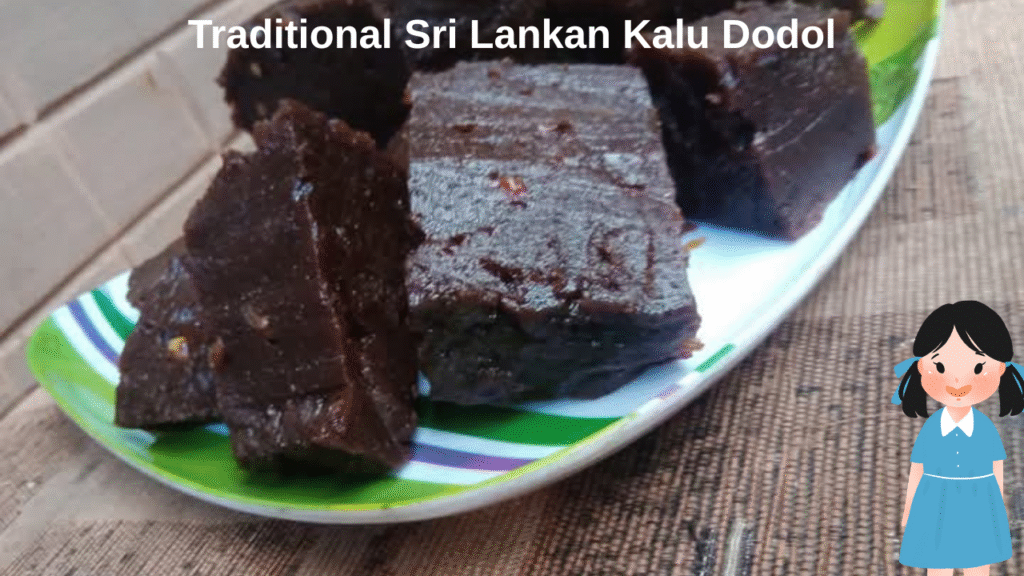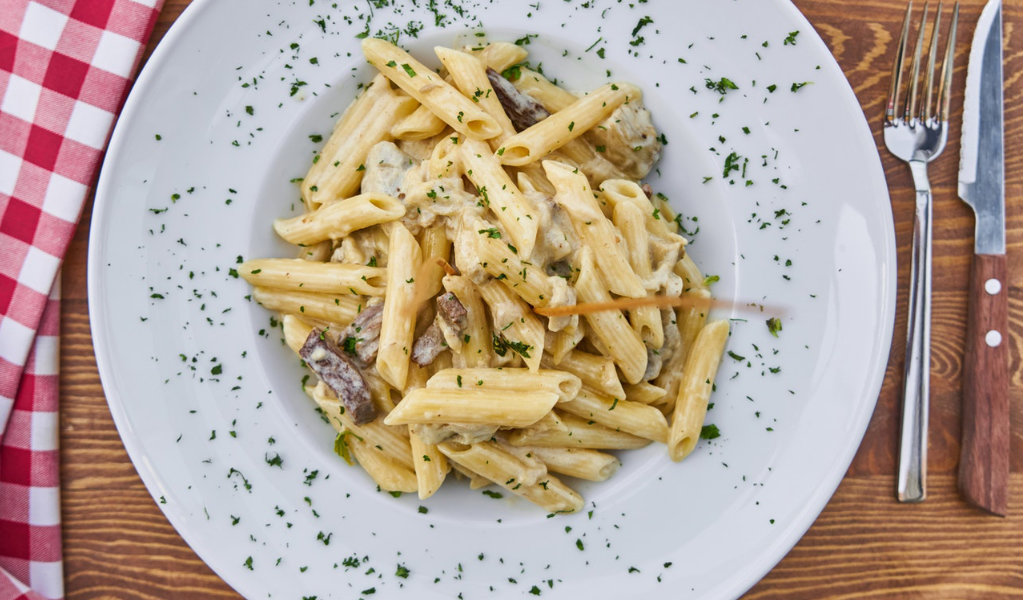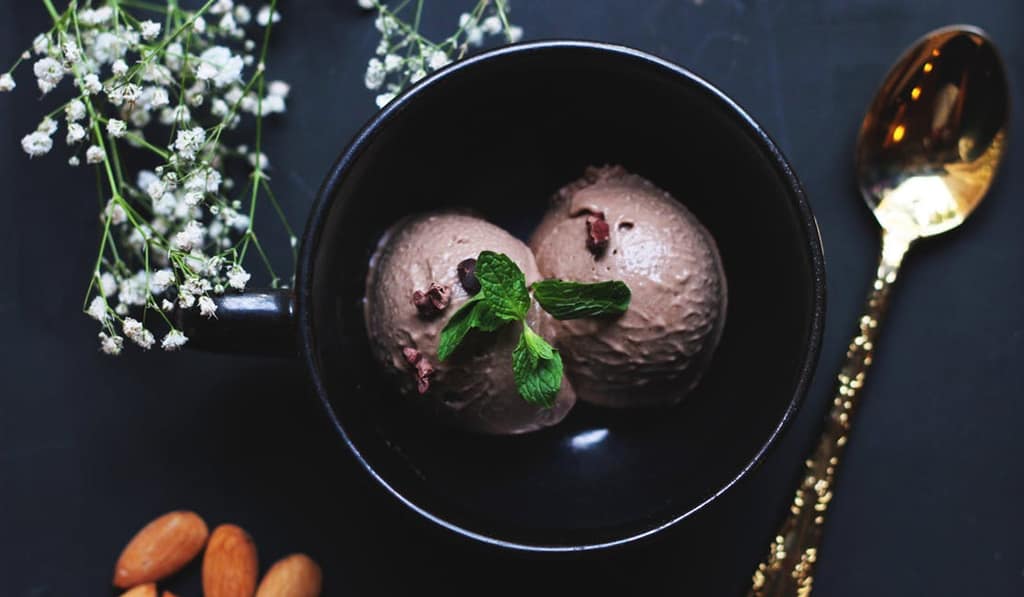Kalu Dodol, literally meaning “black dodol,” is one of Sri Lanka’s most cherished traditional sweets. This rich, dark confection has been an essential part of Sinhala New Year celebrations and special occasions for centuries. Made with coconut milk, jaggery, and rice flour, this sticky, chewy delicacy represents the authentic flavors of Sri Lankan cuisine.

What Makes Kalu Dodol Special?
Kalu Dodol is more than just a sweet treat—it’s a cultural symbol that brings families together. The dark color comes from the slow caramelization of jaggery and coconut milk during the lengthy cooking process. When made with kithul jaggery (palm jaggery), the dodol develops an even richer flavor profile that’s distinctly Sri Lankan.
While making dodol requires patience and constant stirring, the process isn’t overly complicated. The key is maintaining consistent heat and stirring continuously to prevent burning. This recipe yields approximately 2.5 kg of delicious kalu dodol.
Ingredients Required
- White rice flour (kakulu hal piti): 350g
- Thick coconut milk: 3 liters
- Jaggery (preferably kithul/palm jaggery): 900g
- Brown sugar: 250g
- Cardamom pods, crushed: 12
- Cashew nuts: 200g
- Salt: 1 teaspoon
Step-by-Step Preparation Method
1. Prepare the Ingredients
- Cut cashew nuts into small pieces
- Grate or finely chop the jaggery
- Wash the rice flour thoroughly and drain well
- Crush the cardamom pods to release their aroma
2. Create the Rice Flour Mixture
- Reserve 500ml of coconut milk for later use
- Mix the washed rice flour with the remaining coconut milk (2.5 liters)
- Ensure the mixture is smooth and well-combined
- Strain the mixture through a fine sieve to remove any lumps or undissolved flour particles
Pro Tip: Use well-matured coconuts for the richest coconut milk, as they contain more cream.
3. Prepare the Jaggery Base
- Take the reserved 500ml coconut milk and dissolve the grated jaggery in it
- Stir well by hand—small lumps are acceptable, but ensure larger pieces dissolve completely
- Add the brown sugar to this mixture and stir until dissolved
- Place this mixture on medium-low heat and stir until the jaggery and sugar are completely dissolved
4. Combine and Cook
- Add the strained rice flour mixture to the jaggery base
- Important: Stir the rice flour mixture well before adding, as it tends to settle at the bottom
- Add salt and crushed cardamom to the mixture
- Increase heat to medium and begin the continuous stirring process
5. The Long Cooking Process
- Stir constantly using a wooden spoon, scraping the bottom and sides of the pan
- After about 30 minutes, the mixture will start to heat up and bubble vigorously
- Safety Warning: Stand slightly away from the pan during this phase, as the hot mixture can splatter
- Continue stirring for approximately 2-3 hours total
6. Check for Doneness
The dodol is ready when:
- It becomes very thick and doesn’t stick to the sides of the pan
- Oil begins to separate from the mixture
- You can see the wooden spoon leaving clear tracks when stirring
- The mixture forms a cohesive mass
7. Final Steps
- Add the chopped cashew nuts when the dodol is nearly done
- Carefully remove excess oil that surfaces by tilting the pan and spooning it out
- When the dodol pulls away from the pan easily and forms a ball-like consistency, remove from heat
- Pour onto a greased plate or parchment-lined tray
8. Setting and Cutting
- Allow the dodol to cool and set for 6-7 hours at room temperature
- Once completely set, remove from the tray and cut into desired shapes
- Traditional shapes include squares, diamonds, or rectangular pieces
Expert Tips for Perfect Kalu Dodol
Heat Management: Maintain medium heat throughout most of the cooking process. Too high heat will cause burning, while too low heat will extend cooking time unnecessarily.
Stirring Technique: Use a figure-8 motion while stirring to ensure even cooking and prevent sticking to the bottom.
Consistency Check: The dodol should hold its shape when cooled but remain chewy, not hard.
Storage: Store in an airtight container at room temperature. Properly made dodol can last for several weeks.
Jaggery Quality: The type of jaggery significantly affects the final taste. Kithul (palm) jaggery gives the most authentic flavor, while coconut jaggery is a good alternative.
Cultural Significance
Kalu Dodol holds deep cultural meaning in Sri Lankan households. It’s traditionally prepared during the Sinhala New Year period (April) and is often the centerpiece of the sweetmeat table. The lengthy preparation process often becomes a family activity, with multiple generations participating in the stirring process.
The dark color symbolizes prosperity and good fortune, making it an auspicious sweet for celebrations. Many families have their own variations of this recipe, passed down through generations.
Troubleshooting Common Issues
If the dodol is too soft: Continue cooking until more moisture evaporates and oil separates clearly.
If it’s too hard: The mixture may have been overcooked or the heat was too high.
If it sticks to the pan: Insufficient stirring or too high heat are usually the culprits.
Grainy texture: Ensure jaggery is completely dissolved before adding rice flour mixture.
Conclusion
Making traditional Kalu Dodol is truly a labor of love that rewards you with an authentic taste of Sri Lankan heritage. While the process requires time and patience, the result is a rich, flavorful sweet that captures the essence of Sri Lankan cuisine. Whether you’re preparing for New Year celebrations or simply want to experience traditional flavors, this homemade Kalu Dodol will surely impress family and friends.
The key to success lies in patience, constant stirring, and using quality ingredients—especially good jaggery and rich coconut milk. Once you master this traditional recipe, you’ll have a skill that connects you to centuries of Sri Lankan culinary tradition.


